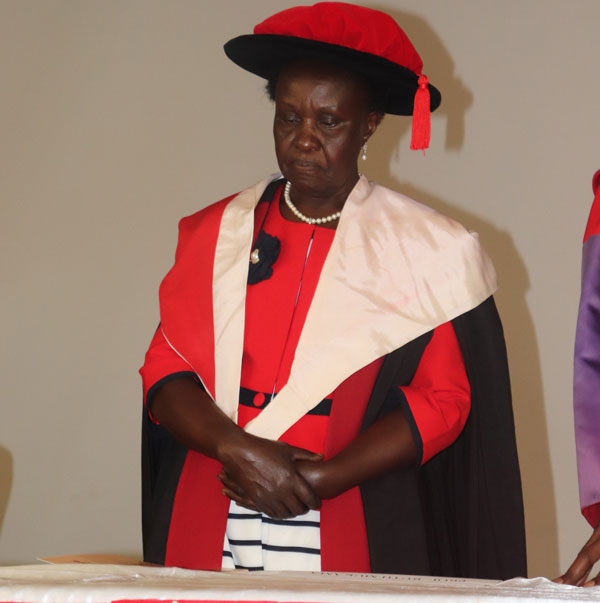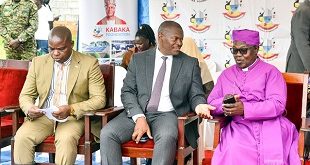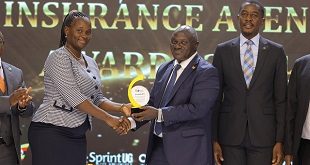
SPECIAL FEATURE | THE INDEPENDENT | For years, there have been ongoing efforts to promote the Kiswahili language in Uganda, including its incorporation into school curricula as a means of encouraging its usage. However, resistance to this initiative has been encountered, particularly among certain tribes and regions of the country.
In recent years, many people, including some writers, have linked the resistance to the Kiswahili language with its association with rogue armed officers and criminals who used it to communicate while terrorizing Ugandans, especially during the turbulent political periods of the 1970s and 80s.
Phrases like “Panda Gari,” (board the car) “Kitambuliso yako iko wapi?” (where is your Identity card?)” “Funguwa Mulango” (Open the door) and “towa pesa” (bring money) remain engrained in the minds of those who experienced those difficult times.
Professor Ruth Gimbo Mukama, who is in charge of Kabale University’s Department of African Languages, says there is validity in the claim as it is true that many Ugandans suffered abuse from thugs and hooligans during the mentioned periods, contributing to the stigmatization of the language.
Professor Mukama, a Fullbright scholar who began teaching Kiswahili at Makerere University in 1979 and arguably the pioneer of the language’s teaching at the higher education level, nevertheless questions the notion that Kiswahili is to blame for the actions of hooligans.
She noted that in Western Uganda, several burglars who used to break into people’s houses spoke Luganda, yet Luganda has never been vilified in the same manner. To her, the argument of blaming the language is misguided, as the responsibility should be placed on the individuals themselves.
However, the linguist and devoted Kiswahili enthusiast points out that people often overlook the fact that despite the negative perception Kiswahili received during the tumultuous 1970s and 1980s, the teaching and promotion of Kiswahili had already encountered resistance for 32 years, spanning from 1925 to 1957, as Christians missionaries and Muslims vied for dominance.
As the professor explains, more records reviewed by our reporter indicate that Kiswahili was already widely used in Buganda before to the arrival of European, having been brought there by Arabs and Swahili traders.
In Buganda, a significant number of people were already proficient in the Kiswahili language. documents suggest that Arabs and Swahilis began teaching Islam and Kiswahili to some Baganda during the reign of Kakaba Ssuuna II (1832 to 1856), and during the era of Kabaka Mutesa I, many prominent chiefs, including himself, were able to communicate fluently in Kiswahili.
Historically, the Baganda people were continuously interacting with Arabs and Swahili traders, which led to the progressive incorporation of many Swahili words into their language that are still in use today. It might be surprising to note that a significant portion of the vocabulary used by the Baganda today is derived from the Kiswahili language, a fact that some might find unexpected.
Mukama, who largely self-taught herself Swahili during her time at the University of York in England, observed that amidst religious tensions in Buganda, Kiswahili became linked with the Muslim community. “With all three religious groups vying for dominance, language was recognized as a potent tool that one religion could wield to surpass the others. Although many Christian missionaries were themselves proficient in Kiswahili when they began to introduce what is now recognized as Western education, they refused to use Kiswahili in their schools,” she noted.
Viera Vilhanova, a prominent Slovak historian of Africa, highlighted in one of her works, that during the early years of the Uganda Protectorate, Swahili was widely used as the official language from 1900 to 1912. She further noted that both the Anglican Church Missionary Society and the Catholic White Fathers initially utilized Swahili as a medium of instruction.
“…but the position of Swahili in Uganda was from the outset in the eyes of the church jeopardized by its association with Islam, a rival and “inferior” religion and soon both missions strove to introduce local languages arguing that the Christian message would be properly understood only if it were taught in the mother tongue,” her paper titled Swahili and the dilemma of Ugandan language policy reads in part.
Available records indicate that in the 1920s as the colonial government wanted to stream formal education which was largely in the hands of the missionaries there were endeavors to adopt Swahili as the language of instruction in schools. However, this initiative faced staunch opposition from both Catholics and Protestants, who perceived Swahili as inherently tied to the Muslim faith.
In fact, the Roman Catholics, particularly the White Fathers, were also slow in allowing to utilizing English as a medium of instruction. Fr Waliggo elaborates on this in his book “History of an African Priest,” recounting Henry Streicher’s (locally known as Munsennyere Sitenseera) resistance to introducing English teaching at the seminary’s early stages.
Caesar Jjingo, a lecturer of Kiswahili at Makerere University, and Marianna Visser in their 2017 paper revisited history by examining the Phelps-Stokes Report of 1925, which advocated for the adoption of Kiswahili as the language of instruction in middle grades. The report proposed Kiswahili as a universal means of communication that could bridge gaps in communication among various ethnic groups and societies across the East African region.
In view of the recommendation, two years later, the then Governor of Uganda, Sir W. F. Gowers, issued a policy statement on language and declared Kiswahili as a language of instruction in schools within regions that previously used Luganda as a language of instruction.
“…the other advocates for the use of Kiswahili as a language of instruction in Ugandan schools, including Hussey, the Director of Education, viewed Kiswahili as a common communication tool that could ease communication gaps across ethnic groups, and different societies within the East African region…Similarly, such proponents advanced the view that books written in Kiswahili could also be read by those who had not learned English or not attended school,” the paper reads in part.
In his well-known publication “History and Development of Education in Uganda,” Professor John Cristome Ssekamwa noted that schools in Buganda, Busoga, the Tororo region, and Bugisu had been using Luganda since 1912 before Governor Gowers decided to implement Kiswahili as the language of instruction. According to Professor Ssekamwa, the adoption of the Kiswahili language faced opposition for two main reasons.
Firstly, Kiswahili was associated with the Islamic religion, unlike Luganda, which was perceived as being more culturally rooted and tied to specific ethnic groups within Uganda. Secondly, Kiswahili was seen as not being directly linked to any particular ethnic group in Uganda, further complicating its acceptance as a medium of instruction.
Traditional authorities in Ankole, Buganda, Bunyoro, Tooro, and Busoga supported the missionaries. While they did not oppose the teaching of Kiswahili as a subject, Kabaka Sir Daudi Chwa II and Omukama of Tooro objected to the language’s usage as a medium of instruction in 1929.
From a political standpoint, Professor A.B.K. Kasozi pointed out that worries about the Closer Union of East Africa, which they saw negatively, drove the traditional rulers’ and their chiefs’ opposition to Kiswahili. In 1931, Christian missionaries went to great lengths and authored a nine-point opposition paper against the adoption of Kiswahili as a medium of instruction and for use in government affairs in Uganda.
This document was signed by Bishop J.W. Campling, Vicar Apostolic of the Upper Nile of the Mill Hill Mission; Bishop A.L. Kitching of the C.M.S. in Teso; and Bishop H. Streicher of the White Fathers of Lubaga. These three missionary groups wielded significant influence in the education sector of Uganda and whenever consulted on the matter of introducing Kiswahili into the education system, these groups consistently voted against it and advocated for the promotion of Luganda instead.
Luganda was the language they prioritized for both educational purposes and religious practices, including prayers. As resistance from religious leaders intensified in the early 1930s, the enthusiastic efforts to promote the language in schools began to wane. Encountering significant opposition, Kiswahili remained a subject in only a select few schools, mainly in regions where students hailed from diverse linguistic backgrounds and lacked a shared indigenous language.
“By 1937 even the Government Kampala Teacher Training School at Nyanjeeradde near Makerere, whose mission had been to train teachers of Kiswahili and teach it at national level closed,” Ssekamwa wrote in his book. Previously challenged by Governor Gowers, proponents of Kiswahili found a stroke of luck with the appointment of Philip Mitchell as the new governor, as he disregarded the language, showing no interest in its promotion.
The De La Warr Commission of 1938 dealt a further blow to the status of Kiswahili by recommending that English, rather than Kiswahili, should be taught from the primary school level. Subsequently, in 1952, a language policy was enacted that effectively removed Kiswahili from the education system of Uganda.
Professor Mukama emphasizes that the 1952 language policy was the final blow that sealed the fate of Kiswahili before independence.
Importantly, she noted, this occurred before the troubled periods of the Obote and Amin regimes, which many people often attribute as the primary reasons for the resistance against Kiswahili. Mukama couldn’t resist echoing words she has frequently employed while writing on the subject matter in numerous publications:
“The core of the language issue in Uganda remains the dilemma of Luganda’s position in relation to other indigenous languages, as well as its position in relation to Swahili. The only notable historical shift is that the campaign for Luganda’s advancement, once championed by European missionaries, is now solely driven by Baganda activists themselves.”
***
URN
 The Independent Uganda: You get the Truth we Pay the Price
The Independent Uganda: You get the Truth we Pay the Price



